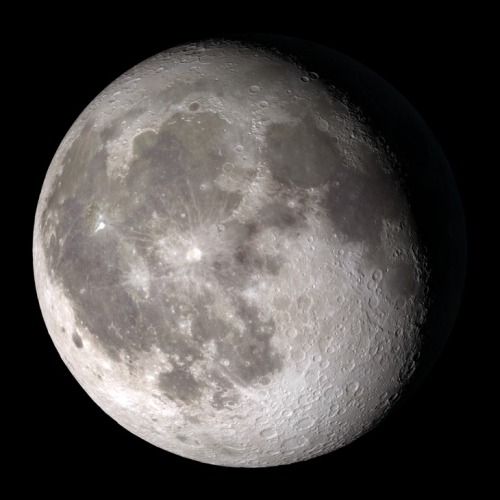#illagodeicigni💓 #cignonero E #cignobianco . Corpo Di Ballo Del #teatrosancarlo Di Napoli. Spettacolo

#illagodeicigni💓 #cignonero e #cignobianco . Corpo di ballo del #teatrosancarlo di Napoli. Spettacolo magico all'esordio della stagione balletto classico 😍 (presso Teatro Comunale Bologna) https://www.instagram.com/p/Bv53Z5cn8BT/?utm_source=ig_tumblr_share&igshid=12w40ig17r196
More Posts from Myletithings and Others
Lucy Lucy...#disolitocosìnonsifà

Alba o tramonto?

On Sunday, Magnus Carlsen retained his World Championship in chess by defeating his challenger, Vishy Anand, 6.5-4.5 in a best of 12 series. Carlsen beat Anand last year to become world champion. But this game from 1952 is much more interesting from a scientific perspective. It is ostensibly a friendly game between Alan Turing, founding father of computer science and namesake of the Turing Test—the idea that you can measure the level of artificial intelligence by seeing if a human can distinguish between a computer acting on its own and another human operating it by just by interacting with the computer—and his colleague Alick Glennie.
But Alan Turing didn’t play this game. Rather, his chess computer did. These days, free chess engines that you can download to your personal computer can beat world champions. Ever since then reigning World Champion Garry Kasparov—by many considered the greatest chess player in history—lost to the chess computer Deep Blue in 1997, human chess players have pretty much shied away from playing the strongest chess engines. The game’s up: computers are simply much better than any human. That wasn’t the case in 1952. What’s so interesting is that Alan Turing was one of the first people to devise an algorithm for playing chess, but there was no computer to run it on. So Turing had to act as a human CPU, calculating each move on paper according to the algorithm, taking up to half an hour per turn. Glennie won the game after 29 moves. The “computer” had previously beaten the wife of David Champernowne, Turing’s collaborator on the algorithm.
In his 1953 paper Chess, Turing starts by asking some basic questions about programming an artificially intelligent chess program, but progressively asks harder and harder questions, and ends with the holy grail of AI, which we seem to be no closer to reaching than in Turing’s time:
When one is asked ‘Could one make a machine to play chess?’, there are several possible meanings which might be given to the words. Here are a few:
Could one make a machine which would obey the rules of chess, i.e. one which would play random legal moves, or which could tell one whether a given move is a legal one?
Could one make a machine which would solve chess problems, e.g. tell one whether, in a given position, white has a forced mate in three?
Could one make a machine which would play a reasonable good game of chess, i.e. which, confronted with an ordinary (that is, not particularly unusual) chess position, would after two or three minutes of calculation, indicate a passably good legal move?
Could one make a machine to play chess, and to improve its play, game by game, profiting from its experience?
To these we may add two further questions, unconnected with chess, which are likely to be on the tip of the reader’s tongue.
Could one make a machine which would answer questions put to it, in such a way that it would not be possible to distinguish its answers from those of a man?
Could one make a machine which would have feelings like you and I do?
This last question is still open. There is a philosophical debate, for example, about whether consciousness is “substrate independent.” The thing is that we don’t really understand why consciousness exists. We start with physics, which has basics laws that we understand to a good degree, even if we are far from uncovering the universal theory of physics that solves every physics problem on the scale of atoms to the scale of the entire universe. On top of physics, we have chemistry, in which reactions, when we discover them, can be logically explained by the underlying physics. And on top of physics and chemistry is biology, which can also be explained as a logical consequence of the underlying chemistry. Not that anyone has ever sat down and broken down every reaction in the human body and explained it all the way from biology through chemistry down to basic physical laws, but it seems that in principle, while daunting, there is no logical contradiction; it seems like it should be possible in principle. But there is no logical reason we can think of why consciousness should arise out of physics, or chemistry, or biology. There is a thought experiment called the “philosophical zombie”, or P-Zombie for short. Could there be a human being perfectly identical to a normal human in physical constitution, perhaps a perfect molecular clone of a living human, that is not conscious, has no feelings or thoughts, is in effect an unconscious automaton? And so far, we have found no logical contradiction in this idea. In other words, consciousness is still a mystery.
This is the “hard problem” of consciousness. And that’s where “substrate independence” comes into play. Is there something special about the biological makeup of a mammalian nervous system that creates consciousness, or could we make a perfect replica in computer form, a silicon nervous system, that would be conscious, have feelings and thoughts like a biological human?
Turing asked the question sixty years ago. But anyway, if you’ve by chance seen or heard about chess in the last month—the WC was quite a lavish affair, held in the former Olympics park in Sochi, Russia—then, if you are scientifically inclined, have a look at this game from 1952, and think of Alan Turing, and of his pen-and-paper computer chess engine, and about his thought-provoking questions, and of course about all his other contributions to the foundations of computer science. We are all indebted to Alan Turing as one of the inventors of computers and the science behind it, sitting here browsing our Tumblr dashboards.










Shengsi, an archipelago of almost 400 islands at the mouth of China’s Yangtze river, holds a secret shrouded in time – an abandoned fishing village being reclaimed by nature. These photos by Tang Yuhong, a creative photographer based in Nanning, take us into this lost village on the beautiful archipelago.

#bologna #hera #scart

Cinema italiano I figli della notte Andrea De Sica Molto di me🧝
The Moon in Motion
Happy New Year! And happy supermoon! Tonight, the Moon will appear extra big and bright to welcome us into 2018 – about 6% bigger and 14% brighter than the average full Moon. And how do we know that? Well, each fall, our science visualizer Ernie Wright uses data from the Lunar Reconnaissance Orbiter (LRO) to render over a quarter of a million images of the Moon. He combines these images into an interactive visualization, Moon Phase and Libration, which depicts the Moon at every day and hour for the coming year.

Want to see what the Moon will look like on your birthday this year? Just put in the date, and even the hour (in Universal Time) you were born to see your birthday Moon.
Our Moon is quite dynamic. In addition to Moon phases, our Moon appears to get bigger and smaller throughout the year, and it wobbles! Or at least it looks that way to us on Earth. This wobbling is called libration, from the Latin for ‘balance scale’ (libra). Wright relies on LRO maps of the Moon and NASA orbit calculations to create the most accurate depiction of the 6 ways our Moon moves from our perspective.
1. Phases

The Moon phases we see on Earth are caused by the changing positions of the Earth and Moon relative to the Sun. The Sun always illuminates half of the Moon, but we see changing shapes as the Moon revolves around the Earth. Wright uses a software library called SPICE to calculate the position and orientation of the Moon and Earth at every moment of the year. With his visualization, you can input any day and time of the year and see what the Moon will look like!
2. Shape of the Moon

Check out that crater detail! The Moon is not a smooth sphere. It’s covered in mountains and valleys and thanks to LRO, we know the shape of the Moon better than any other celestial body in the universe. To get the most accurate depiction possible of where the sunlight falls on the lunar surface throughout the month, Wright uses the same graphics software used by Hollywood design studios, including Pixar, and a method called ‘raytracing’ to calculate the intricate patterns of light and shadow on the Moon’s surface, and he checks the accuracy of his renders against photographs of the Moon he takes through his own telescope.

3. Apparent Size

The Moon Phase and Libration visualization shows you the apparent size of the Moon. The Moon’s orbit is elliptical, instead of circular - so sometimes it is closer to the Earth and sometimes it is farther. You’ve probably heard the term “supermoon.” This describes a full Moon at or near perigee (the point when the Moon is closest to the Earth in its orbit). A supermoon can appear up to 14% bigger and brighter than a full Moon at apogee (the point when the Moon is farthest from the Earth in its orbit).
Our supermoon tonight is a full Moon very close to perigee, and will appear to be about 14% bigger than the July 27 full Moon, the smallest full Moon of 2018, occurring at apogee. Input those dates into the Moon Phase and Libration visualization to see this difference in apparent size!
4. East-West Libration
Over a month, the Moon appears to nod, twist, and roll. The east-west motion, called ‘libration in longitude’, is another effect of the Moon’s elliptical orbital path. As the Moon travels around the Earth, it goes faster or slower, depending on how close it is to the Earth. When the Moon gets close to the Earth, it speeds up thanks to an additional pull from Earth’s gravity. Then it slows down, when it’s farther from the Earth. While this speed in orbital motion changes, the rotational speed of the Moon stays constant.
This means that when the Moon moves faster around the Earth, the Moon itself doesn’t rotate quite enough to keep the same exact side facing us and we get to see a little more of the eastern side of the Moon. When the Moon moves more slowly around the Earth, its rotation gets a little ahead, and we see a bit more of its western side.
5. North-South Libration

The Moon also appears to nod, as if it were saying “yes,” a motion called ‘libration in latitude’. This is caused by the 5 degree tilt of the Moon’s orbit around the Earth. Sometimes the Moon is above the Earth’s northern hemisphere and sometimes it’s below the Earth’s southern hemisphere, and this lets us occasionally see slightly more of the northern or southern hemispheres of the Moon!
6. Axis Angle

Finally, the Moon appears to tilt back and forth like a metronome. The tilt of the Moon’s orbit contributes to this, but it’s mostly because of the 23.5 degree tilt of our own observing platform, the Earth. Imagine standing sideways on a ramp. Look left, and the ramp slopes up. Look right and the ramp slopes down.
Now look in front of you. The horizon will look higher on the right, lower on the left (try this by tilting your head left). But if you turn around, the horizon appears to tilt the opposite way (tilt your head to the right). The tilted platform of the Earth works the same way as we watch the Moon. Every two weeks we have to look in the opposite direction to see the Moon, and the ground beneath our feet is then tilted the opposite way as well.
So put this all together, and you get this:
Beautiful isn’t it? See if you can notice these phenomena when you observe the Moon. And keep coming back all year to check on the Moon’s changing appearance and help plan your observing sessions.
Follow @NASAMoon on Twitter to keep up with the latest lunar updates.
Make sure to follow us on Tumblr for your regular dose of space: http://nasa.tumblr.com.

Skicrush at the mountain

| via Tumblr na We Heart It.

From the Schulz Museum Twitter Feed…

Finalmente si esce alla luce. Non è mai stato così verde! #verdeincittà (presso Piazza Cavour Bologna) https://www.instagram.com/p/ByH1EZ8nfyw/?igshid=1okuru8fcy43k
-
 myletithings reblogged this · 6 years ago
myletithings reblogged this · 6 years ago